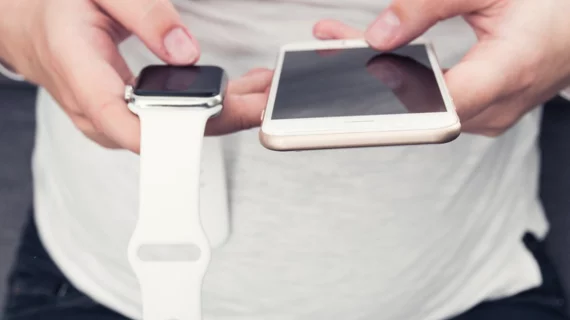‘The future of digital health’: Apple Watch uses heart rates to ID COVID-19
Wearable devices tracking a user’s heart rate can identify when an individual has COVID-19 earlier than other diagnostic methods, according to new findings published in the Journal of Medical Internet Research.
The study’s authors, a team of researchers out of Mount Sinai Health System in New York City, asked healthcare workers to track their own heart rate variability using the Apple Watch from April to September 2020. Participants also answered daily questionnaires about their health.
The watch, it turned out, was able to detect subtle changes in a participant’s heart rate up to seven days before they were actually diagnosed with COVID-19. Also, the researchers observed, heart rates appeared to normalize within one to two weeks of the user’s positive diagnosis.
Daily symptoms associated with COVID-19, according to the analysis of the daily questionnaires, included “fever or chills, tiredness or weakness, body aches, dry cough, sneezing, runny nose, diarrhea, sore throat, headache, shortness of breath, loss of smell or taste and itchy eyes.”
“This study highlights the future of digital health,” corresponding author Robert P. Hirten, MD, an assistant professor at the Icahn School of Medicine at Mount Sinai, said in a statement. “It shows that we can use these technologies to better address evolving health needs, which will hopefully help us improve the management of disease. Our goal is to operationalize these platforms to improve the health of our patients, and this study is a significant step in that direction. Developing a way to identify people who might be sick even before they know they are infected would be a breakthrough in the management of COVID-19.”
“This technology allows us not only to track and predict health outcomes, but also to intervene in a timely and remote manner, which is essential during a pandemic that requires people to stay apart,” added co-author Zahi Fayad, PhD, a professor at the Icahn School of Medicine and director of the school’s BioMedical Engineering and Imaging Institute.
Read the team’s findings here. A final edited version of the analysis is expected to be added in the near future.

